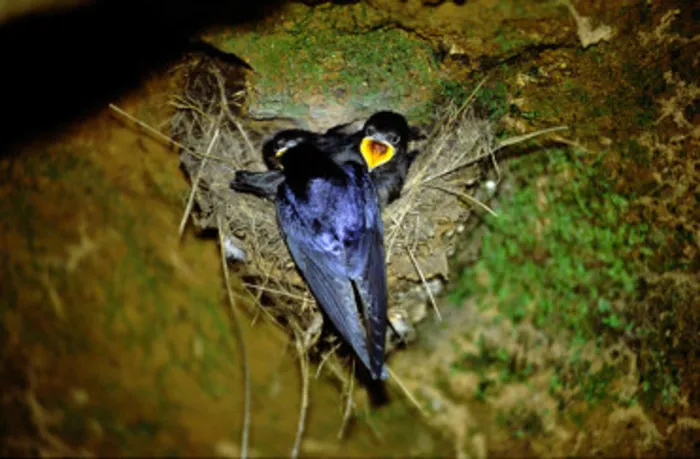Blue swallow threatened as grasslands decline

The South African blue swallow faces immediate danger of extinction if the birds' breeding habitats are not urgently secured. The South African blue swallow faces immediate danger of extinction if the birds' breeding habitats are not urgently secured.
The South African blue swallow population is facing immediate danger of extinction if the birds’ breeding habitats are not urgently secured.
Ian Little, programme manager of the Endangered Wildlife Trust’s Threatened Grassland Species Programme, said the loss of suitable habitat was the primary cause for the birds’ decline.
“The blue swallow will be completely extinct in SA within the next decade if radical intervention does not take place,” he said.
The blue swallow, about the size of a sparrow and characterised by its glossy blue plumage, has specific habitat requirements – the mist belt grasslands.
But according to Little, four known regional populations of the bird have already gone extinct in SA in the past 10 years, including the breeding population in the Kaapsehoop region in Mpumalanga, which was once recognised as a blue swallow natural heritage site.
According to the Endangered Wildlife Trust, the South African blue swallow population consists of only 38 known breeding pairs – less than five in Mpumalanga and 35 in KwaZulu-Natal. The total global population is estimated at about 1 000 breeding pairs.
But Little and his team have found that the number of breeding pairs is continuing to decline, regardless of how many fledglings are produced each year.
“We currently have no idea as to the survival rate of these fledglings,” Little said. “In order to gain a better understanding of the mortality rates of these birds, we have begun to conduct research using microchip technology.”
Little started PIT-tagging blue swallow fledglings in November. PIT (passive integrated transponders) allow researchers to monitor fledgling survival rate and reproductive success.
David Allen, curator of birds at the Durban Natural Science Museum, said that the destruction of the blue swallow’s grassland habitat, owing to commercial forestation, was irreversible.
“A whole habitat in SA is disappearing, and a lot of species will go with it. The blue swallow is a symbol of the highly threatened grasslands,” he said.
“Extinction is not reversible, and that is tragic. It would have taken millions of years for these birds to become what they are, but they can become extinct in the blink of an eye in geological terms.”
Little said that immediate attention needed to be given to the conservation of the blue swallow’s habitat, in conjunction with urgent, in-depth research into the further causes for the species’ population decline.
“This is the only way we will be able to pull the blue swallow from the brink of extinction in our country,” he said.